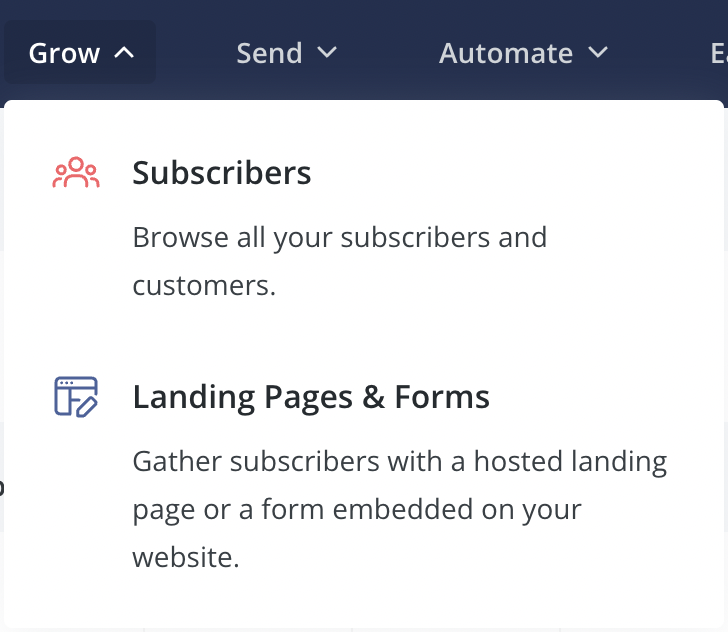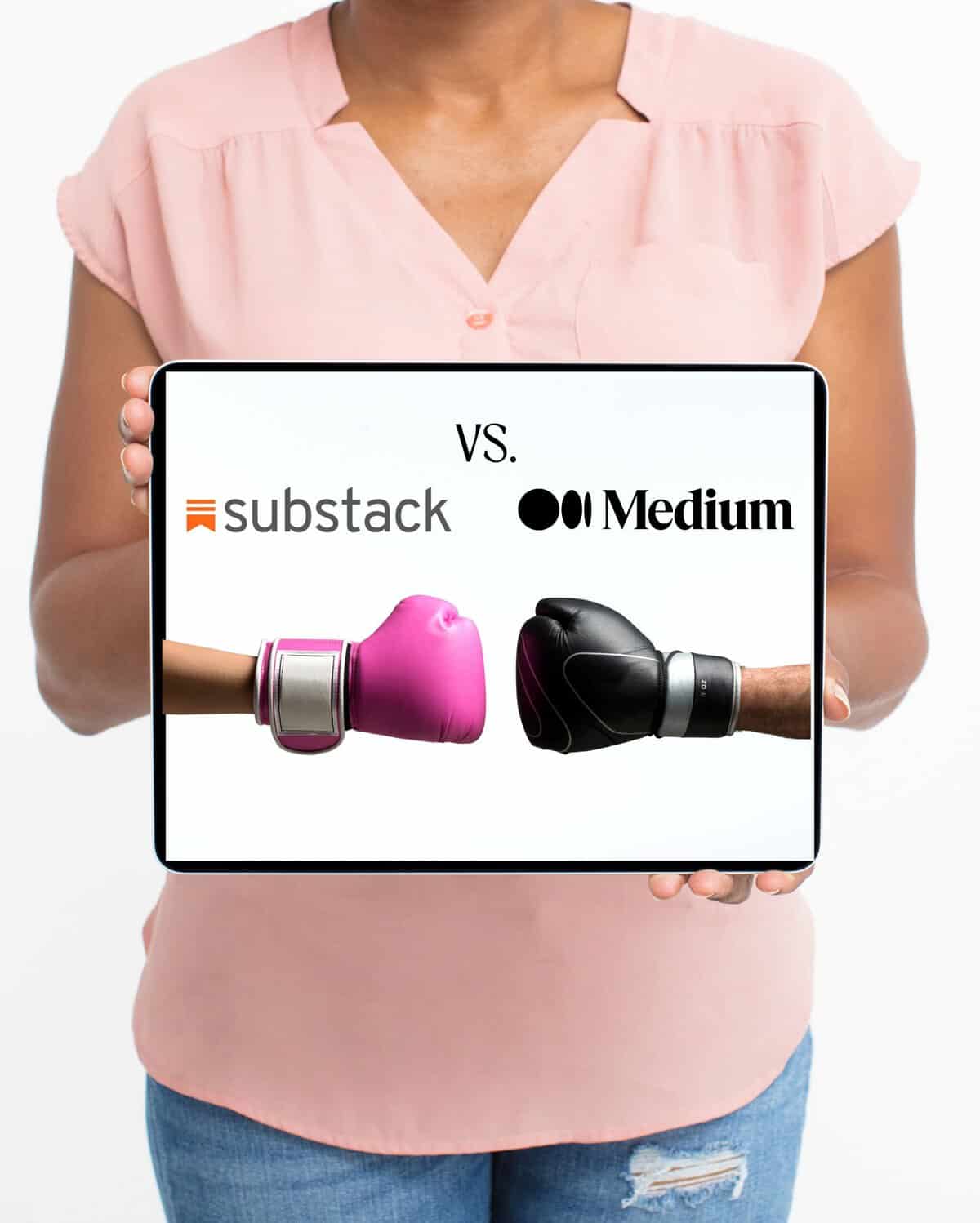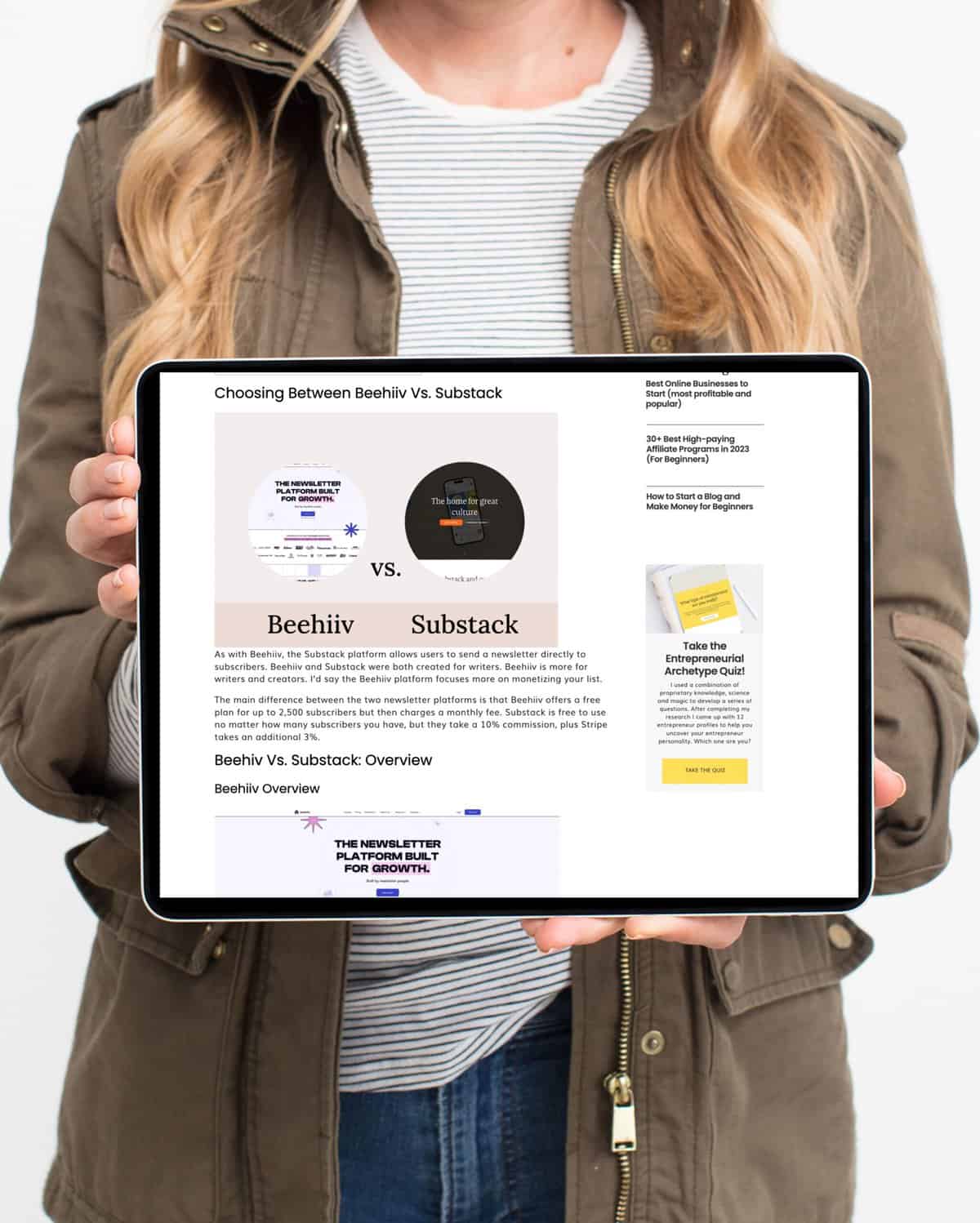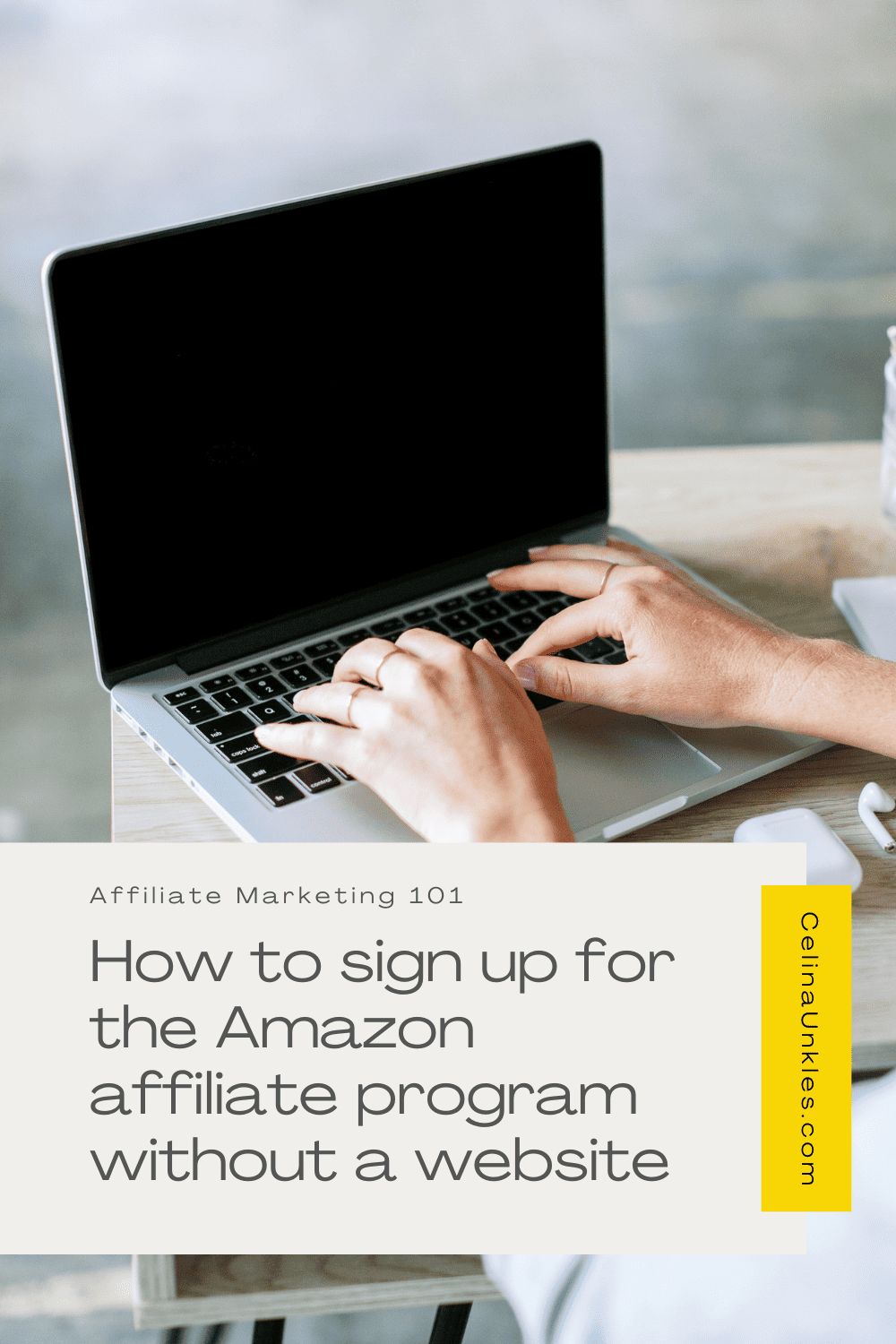Disclosure: This page may contain affiliate links. Please read my disclosure for more information.
So you’ve just started an online business or you have an existing business and you’re wondering how to turn your traffic and audience into leads and customers. If you’re struggling with how to create a lead magnet sales funnel in ConvertKit, I’ll show you exactly:
- What a lead magnet sales funnel is,
- Why lead magnets are important,
- How to make a lead magnet landing page in ConvertKit,
- How to build an email marketing strategy for your funnel and
- How to set up your visual automation in ConvertKit,
- Plus different ways to promote your lead magnet.
What Exactly is a Lead Magnet Sales Funnel?
Your website’s job is to convert your traffic into leads and, eventually, customers. A lead magnet sales funnel is the journey your customer takes from the time they subscribe to your lead magnet landing page, receive your confirmation or thank you page, download the lead magnet, go through your email marketing sequence, receive the value, results or transformation you’re offering them and hopefully become a customer. Once they provide you with their email address, they’ve entered your business ecosystem. It’s your job to nurture them through the sales funnel so they will convert from a lead to a customer.
A lead magnet sales funnel is a crucial part of any digital marketing strategy, as it provides a roadmap for turning website visitors into leads and, ultimately, customers. The term “lead magnet” refers to a valuable resource or offer that businesses provide in exchange for the visitor’s contact information, typically their email address. This lead magnet serves as the initial point of entry into the sales funnel.
The journey begins when a website visitor subscribes to the lead magnet landing page and provides their email address. From there, they will receive a confirmation or thank you page, which confirms that they have successfully subscribed and provides a download link for the lead magnet. The lead magnet is the first taste of the value, results or transformation that the business offers, and is designed to be highly valuable and relevant to the target audience.
Once the lead has downloaded the lead magnet, the next step is for the business to nurture them through the email marketing sequence. This sequence is typically a series of automated emails that provide additional value and build trust with the lead. The goal of the email sequence is to keep the lead engaged and interested in what the business has to offer, while also promoting the main product or service.
It is important for businesses to understand that lead nurturing is a critical part of the lead magnet sales funnel. The goal is to provide the lead with a positive experience, build trust and establish a relationship that will eventually lead to a sale. This requires businesses to be strategic and intentional with the content and messaging they deliver, as well as how they position their main offer.
Ultimately, the lead magnet sales funnel is designed to help businesses convert leads into customers by providing a clear, concise and well-structured journey. The key to success with a lead magnet sales funnel is to understand the needs, interests and pain points of your target audience, and to create a lead magnet that delivers real value and helps position the business as a trusted resource. With the right approach, businesses can use lead magnet sales funnels to effectively grow their customer base and drive sustainable growth for their business.
Why Are Lead Magnets So Important?
A lead magnet is basically any type of valuable resource that you would offer to potential customer “for free” in exchange for their email address. Typically, these are action-oriented items like online courses and webinars, e-books, checklists and promo codes. In other words, a lead magnet is something that is enticing enough to get your potential customers to say “hey, I want that” and give you their email address in exchange.
Lead magnets establish you as an authority. Authority is critical for any business, and email marketing is no different. If you want to build an automated business that scales to the moon, you need to be seen as a leading expert or mentor in your niche. A lead magnet is a great way to establish yourself as an authority in your field by offering helpful tips, tricks, and insights into your industry.
Lead magnets also create an irresistible “call to action”. Once someone opts-in to your email list, its your chance to tell them what you want them to do next.
Your lead magnet should provide value to your audience. They’re either looking to achieve a result or avoid a pain point. This helps create the know, like and trust relationship between the two of you. Your job is to help them or give them the results they’ve been looking for.
Lead magnets are an essential tool for any business looking to grow their customer base and drive conversions. By offering valuable resources, such as online courses, e-books, webinars, checklists, and promo codes, businesses are able to entice potential customers to provide their email address in exchange. The key to the success of lead magnets is that they must be perceived as valuable and irresistible to the target audience.
Lead magnets serve a dual purpose. Not only do they provide a means for businesses to acquire new leads, but they also help establish the business as an authority in their field. By offering helpful tips, tricks, and insights into the industry, businesses are able to position themselves as experts and mentors in their niche. This authority is critical for building trust and credibility with the target audience, which is crucial for converting leads into customers.
Another important aspect of lead magnets is their ability to create an irresistible call to action. Once someone opts-in to the email list, the business has the opportunity to tell them what they want them to do next. This can be anything from purchasing a product or service, to booking a consultation, to downloading another lead magnet. By providing a clear and compelling call to action, businesses are able to move their leads further down the sales funnel.
Ultimately, the success of a lead magnet lies in its ability to provide real value to the target audience. Whether it’s helping them achieve a desired result or avoid a pain point, the lead magnet must be perceived as valuable and relevant to the target audience. By doing so, businesses are able to create a know, like, and trust relationship with their leads, which is critical for converting leads into customers. In conclusion, lead magnets are a powerful tool for any business looking to grow their customer base and drive conversions, and should be an integral part of any digital marketing strategy.
How to Create a Lead Magnet Landing Page in ConvertKit
To create a lead magnet sales funnel using ConvertKit, follow these steps:
- Define your target audience and identify their pain points and what they’re interested in.
- Create a lead magnet that solves a specific problem or addresses a specific interest of your target audience, such as an e-book, video course, or cheat sheet.
- Set up a landing page in ConvertKit where visitors can opt-in to receive your lead magnet. This page should clearly explain the value of your lead magnet and the benefits of signing up.
- Set up an email sequence in ConvertKit to automatically follow up with your new subscribers after they opt-in. This sequence should nurture your new leads and build trust, while also promoting your main product or service.
- Add a form to your website and other marketing channels where visitors can sign up for your lead magnet.
- Monitor your funnel’s performance and make tweaks as needed to improve conversion rates.
- Once a significant portion of your visitors have become subscribers, consider using ConvertKit’s automation features to move them down the sales funnel towards your main offer.
These steps will help you create a lead magnet sales funnel with ConvertKit that effectively captures leads and nurtures them towards becoming paying customers.
ConvertKit is one of the most powerful email service providers on the market. It has all the features you as an entrepreneur need to create a sales funnel landing page or form. Plus, it’s incredibly easy to set up and use.
A landing page is a great way to catch your audience’s attention and get their email address while providing something of value to them. Let’s walk through exactly how to set up your lead magnet landing page using ConvertKit. If you haven’t already, you can sign up for ConvertKit’s free 14-day trial (no credit card is required).
ConvertKit makes this super easy.
1. Simply log in to ConvertKit,
2. Go to “Grow” in the top left of your dashboard,
3. Click “Landing Pages and Forms”,

4. Select “+Create New” and choose a landing page template that works for your lead magnet and business. Modify the text and images for your landing page and select publish.


Tip: To redirect your subscriber to an external thank you page or confirmation page saying “thanks for signing up check your email I’ve sent you something”. Select your landing page, go to “settings” and enter the URL of the page you created.

Create an Email Marketing Strategy for Your Lead Magnet Sales Funnel
Your landing page is the beginning of your sales pitch. It’s a dedicated page with beautiful images, headlines, copy and a call-to-action for your lead magnet. But you don’t want to stop there. You’ll need to nurture your audience with an email sequence to help them convert from a lead to a customer. An email marketing funnel gathers email subscribers on the landing page and sends those subscribers automated emails targeted to their interests.
In ConvertKit you’ll be able to tag and segment your audience based on their interests and goals. Knowing what your audience is interested in gives you the opportunity to send them valuable information. This builds authority and trust. Allowing you to turn your subscribers into customers.
The first email you’ll send will have a link to download the lead magnet. This can also be your welcome email or you can send your welcome email immediately after or the next day. It’s up to you.
Take this opportunity to welcome your new subscribers. Let them know what they can expect from you. On top of the lead magnet you’ll be sending, teach them something related to the topic of the lead magnet. Give them a quick win and even more value than they anticipated.
Make reading your emails a rewarding experience. It’s best to avoid selling any products or services in the first email. You’re just getting to know each other at this point.
You’ll begin to build interest by sharing content with your subscriber. At the bottom of the second email you can briefly mention something you offer but it’s not a hard sell. Over the next few days you’ll share things like your personal story, behind the scenes, blog posts, podcasts, newsletters and anything else they may find valuable. You’ll start to weave in how and or why your product is amazing and how it can help them.
After 3-4 emails you’ll send an email with an offer to get your subscribers to buy from you. This can be a coupon, special rate, one-time bonus offer for your product or services.
Hopefully, at this point, your subscriber buys from you. If they do you can automatically channel them to other sales funnels. If you do not have anything to offer at this time you can put them in your newsletter until you do.
Creating an effective email marketing strategy for your lead magnet sales funnel is key to maximizing your conversion rates and turning leads into customers. A solid email marketing funnel starts with a well-designed landing page, with clear, eye-catching images and headlines that grab the attention of your target audience. By offering a valuable lead magnet, such as an online course or webinar, e-book, or checklist, you can encourage potential customers to provide their email address in exchange for the resource.
In ConvertKit, you have the ability to tag and segment your audience based on their interests, which allows you to tailor your email content to their specific needs and desires. Your first email should include a link to download the lead magnet and serve as a welcoming message to your new subscribers. Use this opportunity to introduce yourself, set expectations for future communications, and provide additional value by teaching them something related to the topic of the lead magnet.
Make reading your emails an enjoyable experience, rather than a sales pitch. Avoid pushing products or services in the first email, instead focus on building interest and establishing trust by sharing engaging content such as personal stories, behind-the-scenes information, blog posts, and podcasts. Over time, you can gradually introduce the benefits of your products or services and make an offer.
By the third or fourth email, you should make a direct offer, such as a coupon, special rate, or one-time bonus, to encourage subscribers to make a purchase. If a subscriber decides to make a purchase, you can channel them into other sales funnels to continue the customer journey. If not, you can add them to your newsletter for future marketing efforts. The goal of your email marketing strategy is to consistently provide value, establish trust, and ultimately convert leads into loyal customers.
How to Set Up Visual Automation in ConvertKit
Visual Automation in ConvertKit is a powerful tool that allows you to build and design automated workflows with ease. With this tool, you can quickly create a series of actions and conditions that will trigger when a specific event occurs. This will help you streamline your email marketing, making it more effective and efficient. Here are the steps to help you set up Visual Automation in ConvertKit:
- Create a new automation: To get started, log in to your ConvertKit account and click on the Automations tab. From here, click on the “Create New Automation” button.
- Choose the trigger: The first step in setting up your automation is to choose the trigger that will start your automation. For example, you can choose “Subscribes” as the trigger, which means your automation will start when a new subscriber is added to your list.
- Add actions: After you have chosen your trigger, the next step is to add actions to your automation. For example, you can choose to send an email to your new subscriber, add them to a specific tag, or subscribe them to a specific sequence.
- Add conditions: Conditions allow you to create specific paths for your automation based on certain conditions. For example, you can add a condition that only sends an email if the subscriber has not received an email from you in the past week.
- Design your workflow: ConvertKit’s Visual Automation feature allows you to easily design and visualize your workflow. You can add, edit, and delete actions as needed, and see how your automation will flow from one action to the next.
- Preview and publish: Once you have completed your automation, you can preview it to make sure everything is set up correctly. If everything looks good, you can then publish your automation and start sending automated emails.
In conclusion, Visual Automation in ConvertKit is a powerful tool that can help you streamline your email marketing efforts. By automating your email sequences, you can save time and ensure that your subscribers are receiving the right message at the right time. The process of setting up Visual Automation in ConvertKit is simple and straightforward, and it only takes a few minutes to get started. So, if you’re looking to improve your email marketing, consider setting up Visual Automation in ConvertKit today.
To automate your email you’ll create visual automations in ConvertKit. Go to “Automate” and then Visual Automations.

To start from scratch go to “+ New Automation”

Or use and edit one of ConvertKit’s existing templates.

How to Promote Your Lead Magnet
Social media can be a powerful tool for promoting your lead magnet. Utilize all of your social media platforms to reach a wider audience and drive traffic to your website.
For example, you can include the link to your lead magnet landing page in your social media profiles. Also, make sure to actively post about your lead magnet and include the link in the descriptions on platforms such as Pinterest, Facebook, Instagram, Twitter, and LinkedIn.
In your posts, don’t be afraid to highlight the benefits of your lead magnet and what makes it unique. For example, you could mention how it can help solve a specific problem or provide valuable insights in a particular field.
Additionally, consider running targeted social media ads to reach a larger audience. By targeting your ideal customer, you can increase the likelihood of them clicking on your lead magnet landing page and becoming a subscriber.
Another way to promote your lead magnet is through guest posting or collaborating with influencers in your niche. By providing valuable content on other websites and reaching new audiences, you can attract new subscribers and drive traffic back to your website.
Finally, don’t underestimate the power of word-of-mouth. Encourage your existing subscribers and customers to share your lead magnet with their network. By providing valuable and useful content, your audience will be more likely to recommend it to others.
In conclusion, there are many different ways to promote your lead magnet. Utilize a combination of social media, targeted ads, collaborations and word-of-mouth to reach a wider audience and drive traffic to your website.
You can use your lead magnet in different ways to drive traffic to your website and increase your conversion rates.
In addition to promoting your lead magnet on your website and in your emails, market and share the link to your lead magnet landing page on social media.
In your social media accounts include a link to your lead magnet in your profile descriptions. Post about your lead magnet and include the link in descriptions on Pinterest, Facebook, Instagram, Twitter, LinkedIn etc.
In conclusion, a lead magnet sales funnel is a crucial part of any website’s conversion process, with lead magnets serving as valuable resources to establish authority and build relationships with potential customers. Setting up a successful email marketing strategy in ConvertKit is an essential step in nurturing these leads and converting them into customers. By utilizing various techniques, including visual automation and promoting your lead magnet through social media, you can increase your website’s conversion rates and grow your business. With the right approach, a lead magnet sales funnel can be a powerful tool for driving traffic and generating revenue for your business.
And that’s it! If you haven’t already signed up for your free trial with ConvertKit!







+ show Comments
- Hide Comments
add a comment